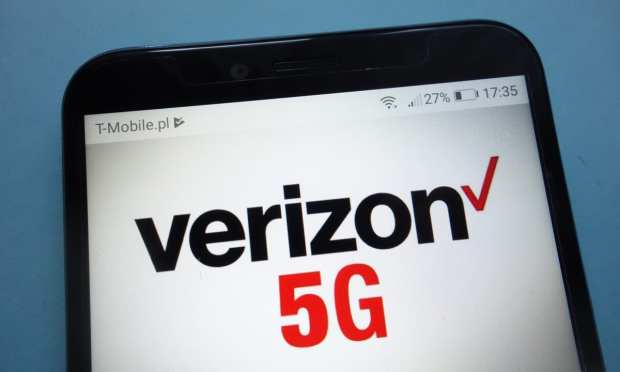Go Figure: Verizon’s 4G Service Blasts Past Its Own 5G Network

Before real-time payment systems truly become “real time,” fast mobile networks with low latency are going to need to be rolled out on a global scale. 5G networks certainly promise both characteristics but, as PC Magazine’s Sascha Segan recently found out, in many cases, the technology actually underperforms its 4G predecessor.
Segan headed out into the wilds of the New York City borough of Queens to test out the CBRS signal that Verizon has recently started using around the country (although without much fanfare). CBRS stands for Citizen’s Broadband Radio Service and is a slice of radio waves that lives in the 3.5 GHz to 3.7 GHz.
This bandwidth became available as a result of the 2010 National Broadband Plan issued by the FCC, which subsequently issued rules for its use in 2015. Auction for pieces of the spectrum pie began on July 23, 2020, ultimately raising $4.58 billion by the winning bidders. Originally used by radar systems operated by the Department of Defense, the frequencies were opened up to commercial interests because of the boost it can provide mobile communications.
Segan certainly saw that boost firsthand. In a test at one Queens location, he saw a speed of 815 Mbps from Verizon’s CBRS-enhanced 4G network versus just 358 Mbps from the company’s standard DSS 5G signal. At another site, CBRS/4G clocked in at 456 Mbps versus 232 Mbps from 5G.
While it may seem surprising that Verizon is operating a 4G network that blasts past its own 5G offering, it’s actually not that unexpected. 5G bandwidth is still relatively limited, so the greater spectrum afforded by CBRS leads to better performance.
But Segan’s test was not all bad news for 5G technology. The speed tests he conducted showed Verizon’s 4G LTE network operating on the CBRS band trouncing the company’s standard 5G signal, known as DSS 5G, for Dynamic Spectrum Sharing. However, when he compared the signal to Big Red’s mmWave 5G, called UWB for “ultrawideband,” there was really no comparison. The blazing-fast UWB signal was consistently the winner by hundreds of Mbps.
The issue is that the UWB signal is quite limited in distribution and accessibility. UWB operates in the 24 GHz to 100 GHz range. While this offers a great deal of bandwidth and speed, the tech requires a lot of antennas to relay signals due to its short wavelengths. It is also hampered by any physical barriers such as walls or trees. So until many more antennas are installed around the country, mobile operators are looking for other ways to distribute their 5G service.
In Verizon’s case, the company’s DSS 5G service operates using a mix of 4G and 5G signals, but the two signals can interfere with each other, which is likely the issue Segan encountered in his tests.
“Although DSS is a cool technology that negates the need for unused spectrum, DSS results in much lower spectral efficiency than LTE or 5G NR by itself,” wrote Michael Thelander from the Signals Research Group. “This inefficiency hurts 5G NR and LTE performance and it is true for both CRS-RM and MBSFN implementations of DSS, albeit for different reasons.”
So for now, a 4G LTE signal sent over the CBRS is a better bet than standard 5G service for speedy mobile transactions. But that will certainly change as more bandwidth becomes available to 5G operators. In fact, Segan sees an upside for the technology in his tests.
CBRS airwaves are situated beneath a swath of radio waves known as the C-band, which operate in the 3.7 to 4.2 GHz range. Because C-band transmitters can operate at higher power than CBRS transmitters, the expectation is that running 5G over this spectrum will provide even greater speed boosts and wider range than those seen with CBRS, letting 5G finally take its place as the faster network, and removing a great deal of the latency from real-time payments and other mobile transactions.
AT&T, T-Mobile and Verizon (along with other providers) will have access to nationwide C-band by the end of the year as a result of an FCC auction held earlier this year that raised over $81 billion.
